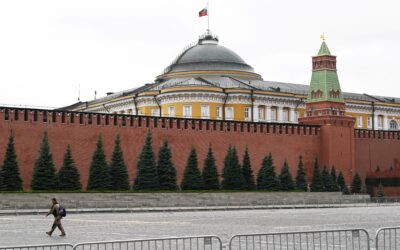
Blindsided by U.S. Ukraine Vote, Kremlin Scrambles to Respond
SUBSCRIBER+ EXCLUSIVE REPORTING — Russia’s reaction to the new infusion of U.S. aid for Ukraine has ranged from shrugs to fury, from warnings of nuclear […] More
OPINION — The use of nuclear weapons has drawn much questionable talk since Russian President Vladimir Putin began making threats to use them following Russia’s invasion of Ukraine on February 24.
Last Friday, for example, at a Senate Armed Services Committee hearing on Atomic Energy Defense Activities, Sen. James Inhofe (R-Okla.) opened the session saying, “Putin’s unprovoked invasion of Ukraine and his reckless threats of nuclear escalation have shattered the security of Europe, and for the first time in decades, forced Americans to face the possibility of a nuclear attack.”
Two days earlier, Rep. Doug Lamborn (R-Colo.) – before the House Armed Services Strategic Forces Subcommittee – questioned the Biden administration’s decision to end funding of the 60-year-old B-83 bomb, whose megaton explosive power was the largest in the current U.S. arsenal. “The hard and deeply buried target set remains a requirement…for U.S. Strategic Command,” Lamborn said. “How does the administration justify removing this capability from our arsenal which will effectively prevent our military from achieving its deterrence requirements?”
Strategic Command’s Adm. Charles Richard has told Congress that he has prepared options for Biden to respond to Russian “limited nuclear [weapons] use in a conventional aggression scenario” in Ukraine, but obviously he has not disclosed them. Richard also has told Congress that so far, “nothing has happened that we didn’t anticipate, that we hadn’t thought about and hadn’t prepared for.”
We do know that Putin’s threat has increased chances that Congress will add funding for the Pentagon to continue producing and developing new submarine, bomber and ICBM delivery systems for U.S. strategic nuclear weapons as well as upgrading our 1,550 deployed warheads and hundreds of lower-yield tactical bombs, air-launched cruise missiles and new, low-yield ballistic missile warheads.
What we don’t know is whether Putin has taken into account the long-term effect his ordering the use of nuclear weapons could have, or what response would come from Biden and our NATO allies should Russian nuclear weapons be used.
Henry Kissinger, who will turn 99 years old this Thursday, turns out to have been one person who has thought seriously for decades about these issues having written his book, Nuclear Weapons and Foreign Policy back in 1957.
Just recently, he spoke out about the Putin nuclear threat in a May 9 interview with Financial Times National Editor Ed Luce and in a recently published book, The Age of AI: And Our Human Future, written with Eric Schmidt, former chairman of Google, and Daniel Huttenlocher of MIT.
In both of those publications, Kissinger put forward ideas that Putin, President Biden and Russian and U.S. military leaders should consider.
“Could the use of nuclear weapons be reconciled with political objectives short of total war and mutual destruction? Would the bomb admit of calculated, proportional, or tactical use?” he wrote in his book. “The answer, to date, has ranged from ambiguous to negative,” he said.
I have studied such weapons for more than 50 years, starting back in 1969, when I worked as an investigator for Senate Foreign Relations Committee Chairman Sen. William Fulbright (D-Ark.). Looking into Pentagon military activities in Europe that affected foreign policy 50 years ago, I discovered U.S. short-range artillery that were capable of firing nuclear shells had to be stationed in West Germany within nine miles of the Warsaw Pact border because the Bonn government did not want such weapons to land on German soil.
The Cipher Brief hosts expert-level briefings on national security issues for Subscriber+Members that help provide context around today’s national security issues and what they mean for business. Upgrade your status to Subscriber+ today.
Back then, when I asked what would happen if there were an actual invasion, an American Army officer told me his troops were ready to pick up the nuclear shells and retreat inside West Germany because – unless U.S. soldiers were immediately in danger of being wiped out – NATO countries would have to authorize nuclear artillery use on NATO soil.
In 1977, the question of tactical weapons arose again when I wrote the first stories about the so-called “neutron bomb” in The Washington Post. The “neutron bombs” were, in fact, nuclear, low-yield artillery shells or short-range missile warheads.
Although they were designed to be a key element in deterring a feared invasion of Western Europe led by Soviet tanks, the U.S. Army still never had a real operational plan for employing such tactical nuclear weapons in battle. As one senior officer told me back then, “We don’t know what the battlefield would look like if one or two were used.”
At this point, it is necessary to point out that Kissinger, in his May 9 interview, complained in reference to the current nuclear talk, “There’s almost no discussion internationally about what would happen if the weapons actually became used.”
Having just written a book on the years-lasting health and environmental impacts of radioactive fallout should nuclear weapon fireballs hit the ground, I firmly believe those considerations should be an equal part of the current discussion, both for Putin and Russians to weigh, as well and the U.S. and NATO, should the Russian President ever order their use.
As Kissinger put it, “My appeal in general, in my discussions on whatever side you are, is to understand that we are now living in a totally new era, and as cultures, we have gotten away with neglecting that aspect,” meaning their actual use.
At a meeting I attended in 1978, then-Supreme Allied Commander Europe Gen. Al Haig was asked how he would use low-yield tactical weapons against the Soviets, who by then had some of their own. He said he would fire one into the North Sea to deter the Soviets from attacking. When Haig was asked what he would do if the Soviets shot one of their own into the North Sea, he didn’t answer.
Although Adm. Richard has claimed there is a strategy if Putin should decide to use a nuclear weapon for anything but a non-threatening demonstration shot, I am not certain what he has in mind.
Most nuclear war games, where both sides have nuclear weapons, start with conventional weapons but end up with one side going nuclear and that ends things.
Kissinger, in his book and the May 9 interview, takes on the situation where a nuclear-armed power and a non-nuclear armed power are at war.
In the 1950s Korean War, he said, “American policy makers refrained from using them [nuclear weapons], opting to suffer tens of thousands of casualties…[against] non-nuclear Chinese and North Korean forces rather than embrace the uncertainty or moral opprobrium of nuclear escalation. Since then, every nuclear power confronting a non-nuclear opponent has reached the same conclusion, even when facing defeat at the hands of its non-nuclear foe.”
During his May 9 interview, Kissinger pointed out that recently, both Russia and the U.S. accepted defeat in Afghanistan “without resorting to [nuclear] weapons, which in a purely technical sense could have ended the conflict.”
“Will he [Putin] escalate by moving into a category of weapons that in 70 years of their existence have never been used?” he asked.
Kissinger then gave his personal view of what should happen if Putin at some point, decides to escalate to nuclear weapons.
“If that line is crossed that will be an extraordinarily significant event,” he said. “Because we have not thought through globally what the next dividing lines would be, we have to think how we’d react were it to happen. But one thing we could not do, in my opinion, is just accept it, because that would open a new method of blackmail.”
While Kissinger said he could not see doing nothing should a Russian nuclear weapon be used, he failed to say what should be done to prevent that kind of blackmail from being successful.
In his book, the ultimate diplomat and strategist who served for years at the highest level of the U.S. government, said tactical nuclear weapons use doctrines, “foundered on concerns regarding escalation and limits. Policy makers feared that the doctrinal lines strategists proposed were too illusory to halt escalation into global nuclear war. As a result, nuclear strategy remained focused on deterrence and ensuring the credibility of threats, even under apocalyptic conditions beyond those any human ever experienced during war.”
In his 1957 book, Kissinger wrote that World War II, which was ended by two U.S. atomic bombs, “brought us not the peace we sought so earnestly, but an uneasy armistice,” because of the appearance of those deadly weapons. “We have responded,” Kissinger wrote 65 years ago, “by what can best be described as a flight into technology: by devising ever more fearful weapons. The more powerful the weapons, however, the greater becomes the reluctance to use them.”
In his new book, Kissinger expanded on that theme writing, “In quest of security, humanity had produced an ultimate weapon and elaborate strategic doctrines to accompany it. The result was a permeating anxiety that such weaponry might ever be used.”
With the major nuclear powers creating numbers and types of nuclear weapons far greater than any one country would or could ever use, Kissinger wrote that “increasingly nuclear weapons were confined to the domain of signaling,” which is what Putin has been doing these past months.
So far, the Biden administration has been restrained, for example responding only verbally to Putin’s ordering a so-called higher nuclear alert status.
But is that the right response?
“I don’t think there is any such thing as a ‘tactical nuclear weapon.’ Any nuclear weapon used any time is a strategic game-changer,” Defense Secretary James Mattis told members of the House Armed Services Committee in 2018.
I agree with Mattis. Today’s thousands of thermonuclear weapons should never be really thought of as war fighting weapons. They were born as terror weapons, to kill as many people as possible, and thus to end a war — which they did.
Therefore, a threat to use any type of nuclear weapons should draw a similar response, not from the U.S. alone, but from nuclear armed allies such as the United Kingdom and France.
These three countries should think about taking the position that if Putin actual uses nuclear weapons in Ukraine, they would be free to use similar weapons, directing them toward military targets in Russia.
It may just be a threat, but at least it would counter the threat put out by Putin.
Sharing informed opinions is important. Opinion pieces represent the diverse views of The Cipher Brief audience and do not represent views of The Cipher Brief.
Read more expert-driven national security insights, perspective and analysis in The Cipher Brief because National Security is Everyone’s Business.
Disclaimer – The Cipher Brief participates in the Amazon Affiliate program and may make a small commission from purchases made via links.
Related Articles

SUBSCRIBER+ EXCLUSIVE REPORTING — Russia’s reaction to the new infusion of U.S. aid for Ukraine has ranged from shrugs to fury, from warnings of nuclear […] More
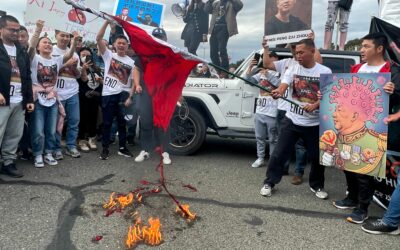
SUBSCRIBER+ EXCLUSIVE REPORTING — When Chinese President Xi Jinping came to San Francisco last November to meet with President Joe Biden, Chinese pro-democracy activists in […] More
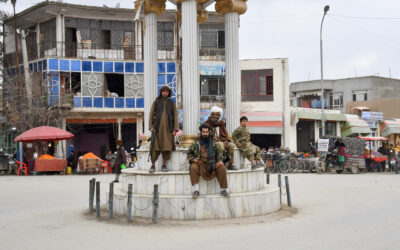
SUBSCRIBER+EXCLUSIVE EXPERT PERSPECTIVE — More than two years after its withdrawal from Afghanistan, the U.S. still does not have a clear way forward in the […] More
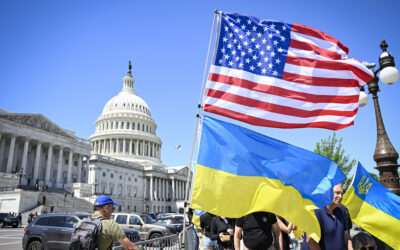
SUBSCRIBER+ EXCLUSIVE REPORTING — Ukrainians greeted Saturday’s long-awaited House passage of $60.8 billion in aid with justifiable jubilation. For months, their soldiers, civilians, and political […] More
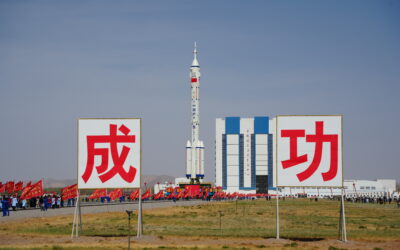
SUBSCRIBER+ EXCLUSIVE REPORTING — A race for control of space is underway, and just as on earth, the U.S. and China are the top competitors. […] More

SUBSCRIBER+ EXCLUSIVE REPORTING — For nearly a week, the Middle East and much of the world were on a knife’s edge, waiting for a promised […] More
Search